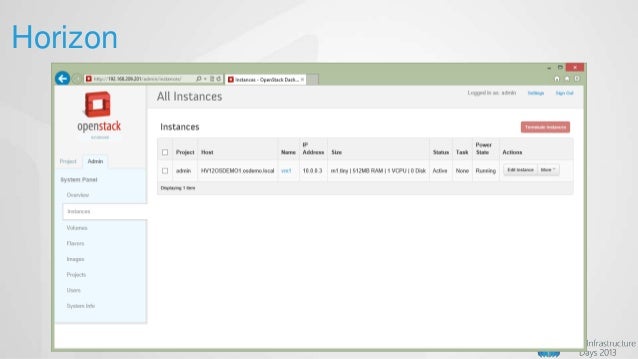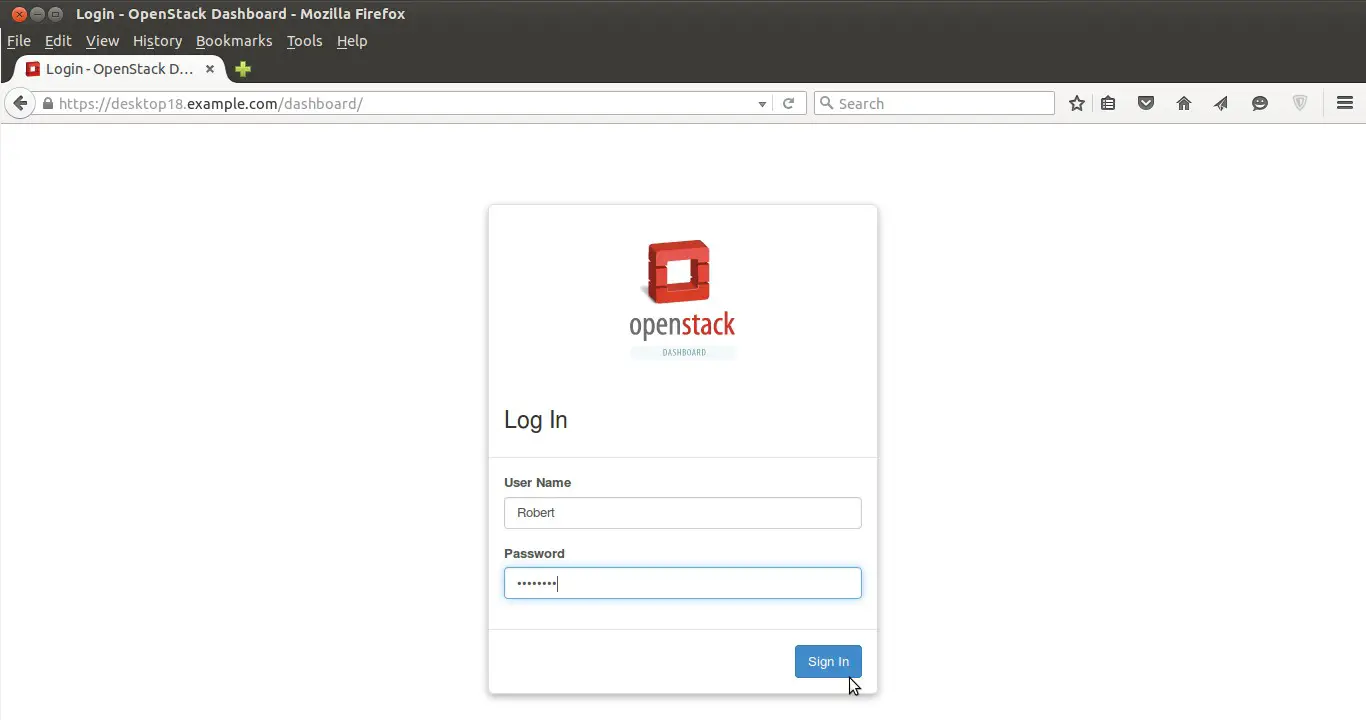
- #Conjure up openstack default login how to
- #Conjure up openstack default login install
- #Conjure up openstack default login software
Verify the cloud by launching a VM called ‘test’ based on the ‘ubuntu’ image (Ubuntu 22.04 LTS). Admin credentials can be obtained in this way (file admin-openrc): sunbeam openrc > admin-openrc The above command provides normal user credentials (file demo-openrc). Now configure the deployed cloud using the configure command: sunbeam configure -accept-defaults -openrc demo-openrc
#Conjure up openstack default login software
configure passwordless sudo for all commands for the current user ( NOPASSWD:ALL)ĭeploy the OpenStack cloud using the cluster bootstrap command and accept software defaults: sunbeam cluster bootstrap -accept-defaultsĬonfigure the cloud and obtain credentials. #Conjure up openstack default login install
install openssh-server if it is not found. The script will ensure some software requirements are satisfied on the host. Or the script can be directly executed in this way: sunbeam prepare-node-script | bash -x & newgrp snap_daemon Sunbeam can generate a script to ensure that the machine has all of the required dependencies installed and is configured correctly for use in MicroStack - you can review this script using: sunbeam prepare-node-script Deploy the cloud Install the openstack snapīegin by installing the openstack snap: sudo snap install openstack -channel 2023.1 A virtual host will generally have a more stable address. Now it’s time to install OpenStack.Caution: Any change in IP address of the local host will be detrimental to the deployment. To do so use the following commands: lxc config set core.proxy_http If you are using a proxy server, you might run into errors if you do not configure LXD specifically. Execute the following commands: sudo usermod -a -G lxd Now, we need to add ourselves to the “lxd” group. Then, the following message should appear: LXD has been successfully configured. What IPv6 address should be used? - answer “ none” (conjure-up doesn’t support IPv6). What IPv4 address should be used? - leave the default answer (“auto”). 
What should the new bridge be called? - leave the default answer (“lxdbr0”).Would you like to create a new network bridge? - leave the default answer (“yes”).Would you like stale cached images to be updated automatically - leave the default answer (“yes”).Would you like LXD to be available over the network? - leave the default answer (“no”).Name of the storage backend to use - type “ dir” (advanced users may choose another option).Name of the new storage pool - leave the default answer (“default”).

Do you want to configure a new storage pool? - leave the default answer (“yes”).To do it, run the following: sudo lxd init To install LXD, open the terminal emulator and type: sudo snap install lxd Don’t worry - the snap support is included with Ubuntu 16.04 LTS and above, so we don’t have to do anything. The recommended LXD installation method is to use snaps.

We’ll need to set up LXD to deploy OpenStack.Ĭonjure-up requires that the minimum version of LXD be 2.18, so the version of LXD distributed through official repositories (which can be installed with sudo apt install lxd) is not compatible with conjure-up.

A well-specced computer running Ubuntu 16.04 LTS with 16 gigabytes of RAM (SSD drive is strongly recommended).
#Conjure up openstack default login how to
How to install OpenStack on your machine with conjure-up. Luckily, with conjure-up, it’s very simple and straightforward. OpenStack is an advanced platform and deploying it manually may not be an easy task. OpenStack is a very popular software stack for creating private and public clouds. Learn how to deploy OpenStack on a single machine using the conjure-up deployment tool.








 0 kommentar(er)
0 kommentar(er)
